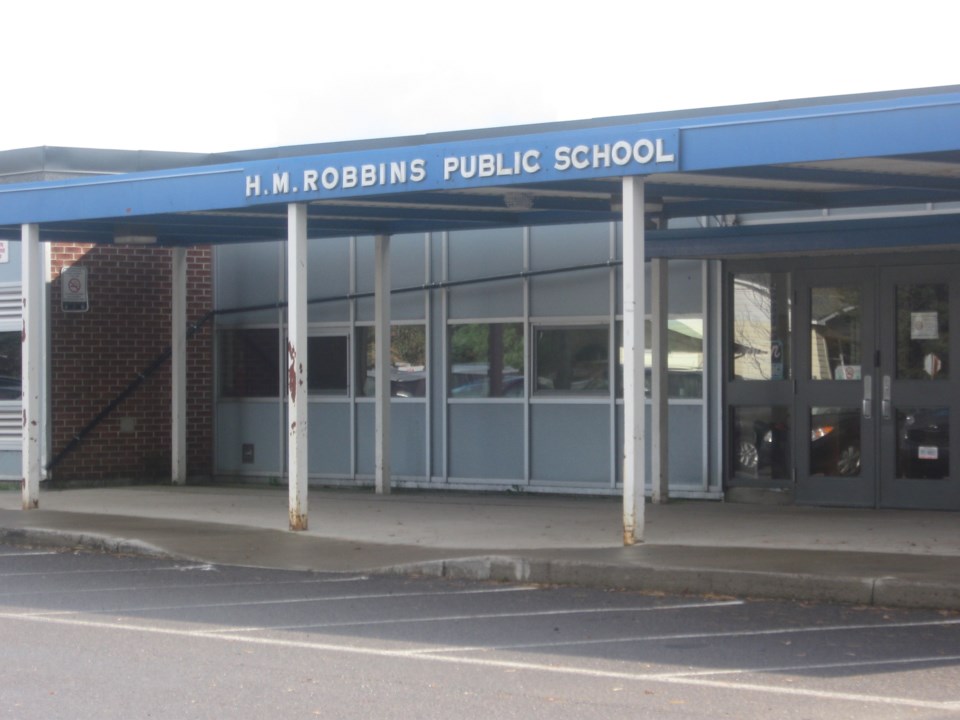From the archives of the Sault Ste. Marie Public Library:
*************************
Remember This? . . . Harry Melvin Robbins – a teacher of many!
Harry Melvin Robbins was born on December 18, 1896 at Sheguiandah, Manitoulin Island.
After attending a log school at Ten Mile Point located on Manitoulin Island he completed First Form (the first year of high school), he went to Little Current and attended a one room continuation school in order to complete Second Form.
Unfortunately there was no school on Manitoulin Island that taught classes beyond the Second Form so in September 1913 at the age of almost 17 years, Harry Robbins travelled by boat to Owen Sound.
Since there was no road connecting Manitoulin Island with the mainland at that time he was unable to return home again until June 1914. The school in Owen Sound taught the material for both Third and Fourth Forms in one year. The students were then given the option of writing a final exam for either the Third or Fourth Form material. Harry Robbins chose to write the Fourth Form exam and passed. He then attended the North Bay Normal School (Teacher’s College) from 1914 to 1915 in order to obtain his teaching credentials.
Harry Robbins began his teaching career in Rydal Bank where he taught school from 1915 to 1917 as the only teacher for the school.
During this time Rydal Bank was an active lumbering town. Mr. Robbins however had an adventurous spirit and in 1917 he decided to move west to Alberta simply because it “seemed like an interesting thing to do.” After teaching for one year at a small school near Bashaw, Alberta he moved to Bluesky , a community close to Peace River, home to about 25 people. He “proved up a homestead”. This involved breaking the land and planting crops on about thirty acres of land. The house that he built on the land was probably not much bigger than a modern day shed!
After three years, he returned to Manitoulin Island for a visit with his family in 1921.
Although he had enjoyed his time spent in Alberta, his family was very persuasive and suggested that he move back a little closer to home. So in September of 1921 he moved to Korah Township to become the principal of the West Korah No. 3 School, a two-room school. It was quite common at this time for teachers to board with a local family in the school district so Mr. Robbins boarded with the Telford family when he first arrived in the area. A young teacher, named Edna Lamming who began teaching in the Junior Room captured his attention and on July 18, 1928 they were married. In a home located next door to the school, they raised two daughters, Lillian and Dorothy.
During two summers in the early 1920s Mr. Robbins travelled to Guelph in order to take courses in horticulture at the Agricultural School in Guelph. Using this knowledge that he gained he included this material into the curriculum for his students. The beautiful gardens at the West Korah No. 3 School (and later W.J. Lamming Public School) were well- known throughout the area. The flowers and vegetables that the students grew were also prominently featured at the school fairs in both Korah and Prince Townships. In 1933, the Korah and Prince Fair had more than 600 entries making it the largest rural fair in the Algoma District.
The school always had an ice rink each winter and Mr. Robbins ensured that equal time was given for both the skaters and the hockey players because he felt the rink solved a lot of discipline problems. He spent a lot of time with the school’s hockey teams and was even known to allow younger children learning to play hockey to extend their lunch hour by 15 minutes so that they could skate without interference from the older children.
In 1953, during the year of Queen Elizabeth II’s coronation, he was surprised to receive a Queen’s Coronation Medal which was given to acknowledge his contribution to his community. In June 1962, he retired from teaching after a 47-year career. At a dinner in his honour on June 9, 1962, many spoke of his dedication and interest in each of his students. One of the speakers referred to him as a “civil servant who should go down in history.”
Special speaker George Nixon stressed that his interest in his students didn’t end when the student graduated but he continued to follow the progress of his students throughout their lives. He spoke for the entire community when he said that “Harry Robbins excelled in his duties as a teacher.” During Mr. Robbins’ brief speech he claimed that he “thought at times that the speakers were referring to someone else. I have read of these occasions but I never expected to have such.”
It is no surprise that when a new school was being built on East Balfour Street, the school board decided to name the new school H.M. Robbins Public School to honour an outstanding educator who did much to enrich the lives of many students. Demonstrating his modesty, Harry M. Robbins felt it was an honour to have a school named after him saying, “I never was anything but a rural teacher.”
*************************
Each week, the Sault Ste. Marie Public Library and its Archives provides SooToday readers with a glimpse of the city’s past.
Find out more of what the Public Library has to offer at www.ssmpl.ca and look for more Remember This? columns here
